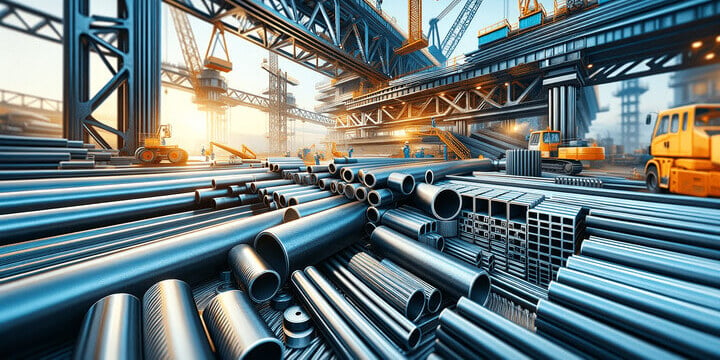In the steel industry, iron is categorized into two main types based on the material of the finished product: "Carbon Steel" and "Stainless Steel & Alloy Steel." These categories further break down into upper, middle, and lower segments based on different market roles.

Upstream: Raw materials for carbon steel include coal, iron, sand minerals, and scrap steel. Primary processes involve blast furnace smelting (heating iron ore and reducing it to produce raw iron) or electric arc furnace (EAF) refining, both focusing on enhancing steel strength and hardness. Products include billets, blooms, and slabs. Carbon content differentiates carbon steel from stainless steel, without added corrosion-resistant elements like chromium.
Midstream: This includes various processes such as cold/hot rolling for steel plates, rebar, coils, wire coils, and more. It also covers various types of steel and angle steel produced through rolling, cutting, trimming, and processing.
Downstream:
1.Construction Industry: Cold and hot-rolled steel plates and rebars are used in constructing buildings, bridges, roads, and other structures.
2.Machinery Manufacturing: Steel coils and wire rod coils are extensively applied in manufacturing machinery equipment, vehicle components, and various industrial machinery.
3.Processing and Manufacturing: Processed and cut steel forms various types of steel and angle steel, used in producing components, assemblies, crafts, and more.
4.Energy and Transportation: Steel materials find wide applications in the energy production and transportation sectors, including steel bars, pipelines, and more.

Upstream: Raw materials for stainless steel include iron ore, chromium, nickel, cobalt, etc. Iron ore, a natural ore containing iron, primarily consists of iron oxides, carbonates, and sulfates. In stainless steel production, iron is extracted from iron ore through an electric furnace process. Nickel, molybdenum, copper, titanium, niobium, and other alloy elements are added to create stainless steel, imparting corrosion resistance and oxidation resistance.
Midstream: Due to specific demands (corrosion resistance, food-grade applications, etc.), this sector may include additional processes such as cutting, pipe manufacturing (extrusion, stretching, bending, etc.), surface treatment (polishing, pickling, chrome plating, etc.), welding, and connection (TIG welding, laser welding, etc.).
Downstream:
1.Food Processing and Catering: Highly corrosion-resistant stainless steel utensils are widely used in food production and catering, including stainless steel trays, bowls, and cutlery.
2.Medical Instruments: Stainless steel's corrosion resistance and biocompatibility make it a preferred material for manufacturing surgical instruments and medical equipment.
3.Chemical and Marine Engineering: Stainless steel pipes and containers are common in the chemical industry and marine engineering due to their corrosion resistance in harsh environments.
4.Home and Decoration: Stainless steel's high-temperature resistance, ease of cleaning, durability, and eco-friendliness make it popular in furniture production, such as lamps and kitchen utensils.
[2]